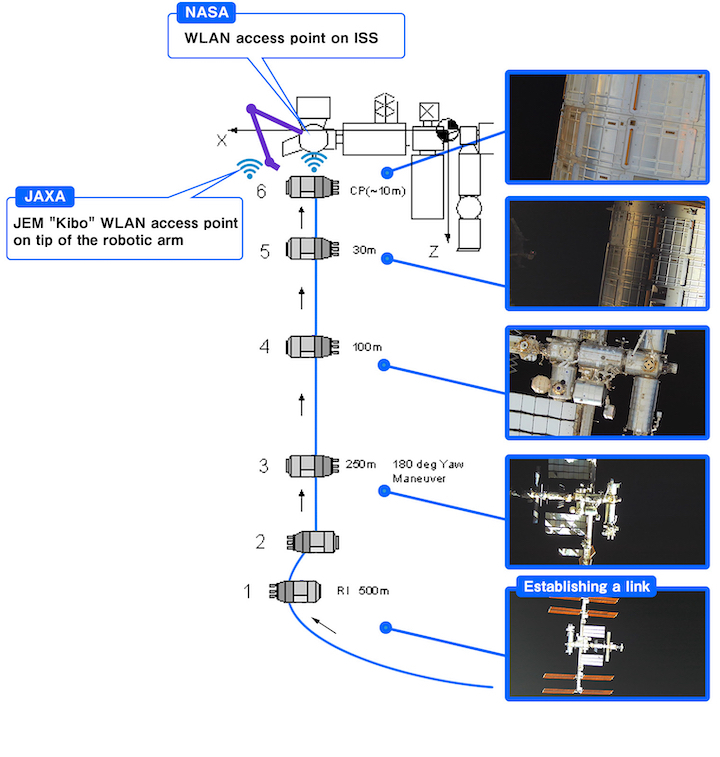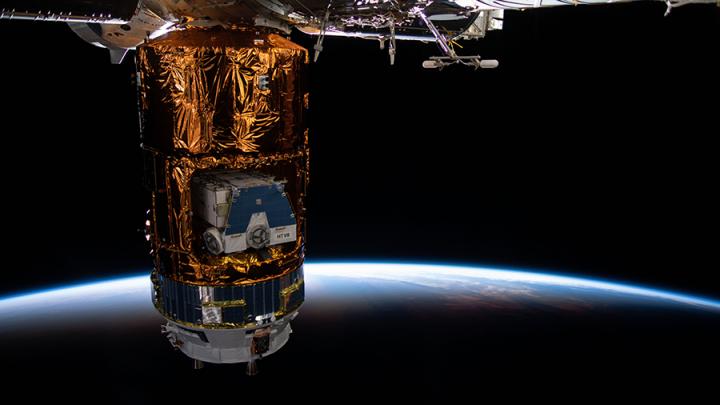11.08.2020

August 11, 2020 (JST)
Japan Aerospace Exploration Agency (JAXA)
Schedules of departure from the International Space Station (ISS) and re-entry to the atmosphere of the H-II Transfer Vehicle “KOUNOTORI9” (HTV9) are determined as follows.
| Departure from the ISS: | August 19, 2020 / 2:35 a.m. (Japanese Standard Time, JST)*1 |
|---|---|
| Re-entry to the atmosphere: | August 20, 2020 / 4:07 p.m. (JST)*1 |
H-II Transfer Vehicle "KOUNOTORI" (HTV)
The H-II Transfer Vehicle (HTV) also known as "KOUNOTORI" is an unmanned cargo transfer spacecraft developed and operated by JAXA for delivering supplies to the International Space Station (ISS). KOUNOTORI is capable of delivering up to six tons of cargo and has the world's largest transportation capacity. It also has the world's unique capability of carrying foods, clothes and large-sized extra- and intravehicular experimental devices including ISS batteries on one flight.
World's First View of "Kibo" from HTV9 / HTV9 from "Kibo"
Japanese Resupply Ship Departs Next Week

A Japanese resupply ship will depart the International Space Stationnext week after nearly three months attached to the orbital lab. Meanwhile, the Expedition 63 crew continued a variety of science operations today.
JAXA, the Japan Aerospace Exploration Agency, announced Tuesday, Aug. 18, as the release date for its H-II Transfer Vehicle-9 (HTV-9) cargo craft. Ground controllers will remotely control the Canadarm2 robotic arm to grapple and remove the HTV-9 from the Harmony module. Commander Chris Cassidy of NASA will command the Canadarm2 to release the cargo craft into space completing an 85-day station mission. The HTV-9 will orbit Earth on its own for two more days and reenter the atmosphere above the South Pacific for a fiery, but safe demise.
The HTV-9 delivered four tons of gear on May 25 that included the new Space Frontier Studio for live broadcasts inside Japan’s Kibo laboratory module. Cassidy set up the live-streaming hardware today for an event highlighting science activities inside Kibo.
Cassidy also completed fluid research work that took place inside the U.S. Destiny laboratory module’s Microgravity Science Glovebox. The veteran astronaut disconnected, took apart and stowed the hardware that investigated water droplet behavior in microgravity. Results may promote water conservation and improve water pressure for Earth and space systems.
Cosmonaut Anatoly Ivanishin continued working on a long-running Earth observation study on the Russian side the station. That experiment is helping scientists monitor and forecast natural and man-made catastrophes around the world.
Fellow cosmonaut and flight engineer Ivan Vagner worked during the morning testing broadband video communications gear. The first-time space flyer then spent the rest of the afternoon servicing the ventilation subsystem in the Zvezda service module.
Quelle: NASA

